Recently in these pages we have been developing a Guide to School Assemblies. Today we will look at shows and field trips featuring permanent, mobile or portable planetariums.
 Of all the field trips a student may take, and of all the assembly programs that may visit a school, few if any are as truly awe inspiring as a planetarium.
Of all the field trips a student may take, and of all the assembly programs that may visit a school, few if any are as truly awe inspiring as a planetarium.
It isn't that a visit inside the world of astronomy is a curriculum boost, although a planetarium does provide a key boost in teaching about astronomy and the universe in which our little planet is found. And astronomy is a part of the curriculum just about everywhere, turning up several times during a child’s journey from preschool through 8th grade.
It isn't that there are not more flashy, loud and raucous programs you can bring to your school. There are plenty of those.
It isn't that there not other places to visit or topics to cover.
It isn't any of that.
What makes it so cool is the entire package.
First, consider the dry benefits.
Astronomy means space. It means science.
Inspiring kids' interest in space and science is good. It is important. Not only are these areas that are important to our future as a nation, they are also areas where careers pay exceptionally well. That is what all the fuss about STEM is about. In case you have not heard, STEM (Science, Technology, Engineering and Math) is at the very heart of the latest initiatives in education. It is the buzzword (buzz acronym?) of the minute. Improving test scores in these areas and promoting interest in these fields is key to our future success as recognized by educational professionals, business, leaders, politicians and just about everyone. And a visit to a planetarium is of great, no spectacular assistance in generating this kind of improvement and interest.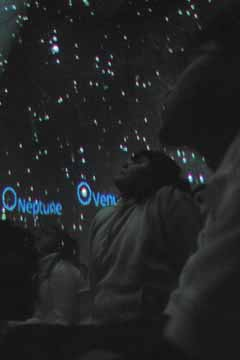
But beyond that, it is just plain cool. It means experiencing a mind boggling and childlike wonder about the infinite vastness of outer space and our place within this universe. It stimulates the imagination and sends the emotions reeling, touching our minds in ways little else can.
I love to tell the story of the time one of our performers, midway through a planetarium performance, was regaled with questions of a very intelligent sort by a young student. The entire audience became suddenly silent. This lad was autistic and never spoke at all. Ever. But being inside the dome and seeing the stars in all their glory, touched the boy in corners of his mind previously unreachable by all standard methods. This is not uncommon.
Entering a planetarium dome provokes an excitement only magnified and compounded when the lights go dark and the stars overhead suddenly shine out in all their magnificent glory. It is an amazing experience.
When my children were in school we arranged many field trips and assembly programs and enrichment activities for them. They were visited by science shows with hands on workshops. They listened to authors speak. They visited museums and factories and ballparks. They saw magicians. They experienced living history characterizations. They were extremely lucky and they benefited from everything we could throw at them. Of all those amazing opportunities, the one they remember the most was the planetarium. My son and his friends say that is true. My daughter and her friends (who never liked anything, or so they said) all say that as well. A planetarium is, simply, the apex, the pinnacle of school enrichment.
If you are fortunate, your school will have ready proximity to a real “brick and mortar” facility, and you will be able to arrange a field trip to a planetarium. If that is not the case, or if travel expense and logistics rule out such a scenario, do not despair. Portable planetariums which can visit your school and set up in your gym are readily available in most places.
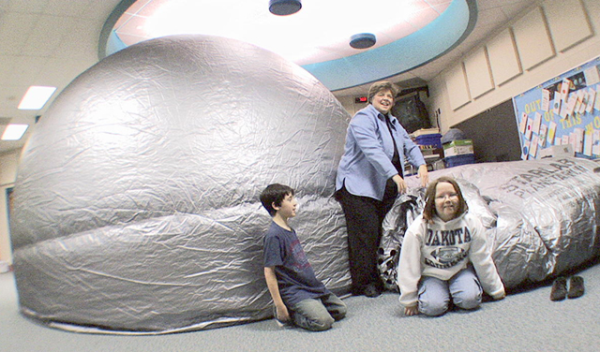 Originally, in the distant past (some thirty years ago), a company called Starlab began marketing a portable or mobile planetarium unit. These units were sold to school districts and museums and various other groups around the country in great numbers. The original package included a small dome, inflated by a regular box fan, capable of holding a class room full of kids at a time. Inside was a serviceable analog star projector. A canister of film was placed over a light projector and stars were projected onto the interior of the dome. It worked very well for the time providing a cost effective improvement over models and diagrams which had previously been the best available way to teach astronomy in an elementary school. The operator was usually a teacher. Instruction on how to operate the projector was provided by the manufacturer. School districts would usually have one, two or three teachers trained in use of the machine and they would rotate around from school to school within the community.
Originally, in the distant past (some thirty years ago), a company called Starlab began marketing a portable or mobile planetarium unit. These units were sold to school districts and museums and various other groups around the country in great numbers. The original package included a small dome, inflated by a regular box fan, capable of holding a class room full of kids at a time. Inside was a serviceable analog star projector. A canister of film was placed over a light projector and stars were projected onto the interior of the dome. It worked very well for the time providing a cost effective improvement over models and diagrams which had previously been the best available way to teach astronomy in an elementary school. The operator was usually a teacher. Instruction on how to operate the projector was provided by the manufacturer. School districts would usually have one, two or three teachers trained in use of the machine and they would rotate around from school to school within the community.
However, there were drawbacks.
The dome, housing only a classroom at a time, took days or weeks to service just one school. The projector was clumsy. In order to show the apparent movement of the night sky, as observed from a turning and moving Earth, the operator needed to gently rotate the film canister, resulting in a jerking motion in the heavens which often disturbed the grandeur. To show a close up or a view with diagrams indicating specific constellations, the operator had to remove one canister and replace it with another. The same was true if the operator wished to show the stars as visible from the Southern hemisphere. The additional canisters were purchased at additional cost as well. Overall the experience left much to desire.
And, over time, teachers began to retire, training was forgotten, and many districts found their Starlabs consigned to a dusty closet somewhere, as parts were broken or lost.
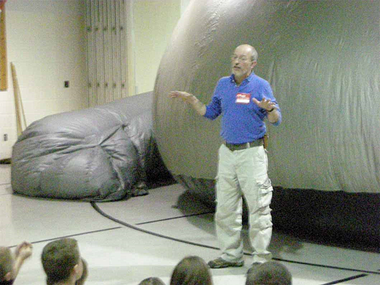 But technology continues to improve. Companies such as ours developed larger domes, capable of accommodating up to 100 students per showing. Now, in five shows over the course of a single day, an entire school can experience the program. Difficulties were encountered, and overcome. Early domes were made of thin material and could only function in a darkened room. Thicker material solved this problem, negating the need for a dark room. With constant, daily use and travel, domes began to develop small, pin sized holes which allowed additional and unwanted “stars” to appear during shows. This was solved by creating newer domes with double fabric walls.
But technology continues to improve. Companies such as ours developed larger domes, capable of accommodating up to 100 students per showing. Now, in five shows over the course of a single day, an entire school can experience the program. Difficulties were encountered, and overcome. Early domes were made of thin material and could only function in a darkened room. Thicker material solved this problem, negating the need for a dark room. With constant, daily use and travel, domes began to develop small, pin sized holes which allowed additional and unwanted “stars” to appear during shows. This was solved by creating newer domes with double fabric walls.
Finally, the computer age made possible the development of digital projectors with computer generated imagery. Suddenly, with the push of a button, operators could show images which instantly shifted from one view to another replete with dazzling d graphics and displays. Closeups and zoom technology further enhanced the experience.
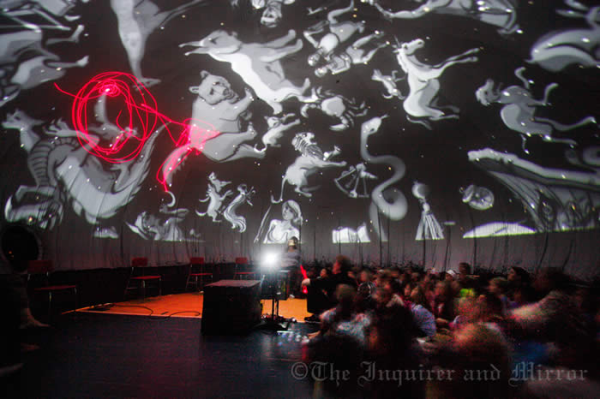 Mobile Ed's Sky Dome utilizes these state of the art technologies to bring the most up to date and magnificent presentation possible to your school. Other companies do too, of course.
Mobile Ed's Sky Dome utilizes these state of the art technologies to bring the most up to date and magnificent presentation possible to your school. Other companies do too, of course.
But beware. Not all “domes” are alike.
Sky Dome features a live presenter working directly with the audience and tailoring each presentation, moment by moment, to the capabilities and needs of your audience, regardless of their age or comprehension skills. The program is always suited to the audience, with a real person there to answer questions as the program progresses. 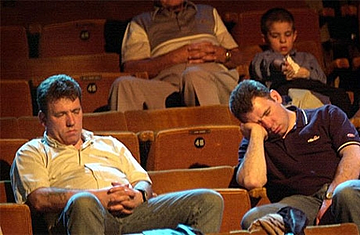 But there are other “domes” that utilize “canned” performances. With these, there is no interaction and the students simply sit through a prerecorded showing with no interaction or possibility of questions, like watching televison or a movie. Some “domes” in fact are nothing more that a short movie projected on the inside of a dome. While production values may be good, we feel that an interactive experience inside a real planetarium, and featuring state of the art graphics and imagery is far more satisfying and of far greater benefit to students.
But there are other “domes” that utilize “canned” performances. With these, there is no interaction and the students simply sit through a prerecorded showing with no interaction or possibility of questions, like watching televison or a movie. Some “domes” in fact are nothing more that a short movie projected on the inside of a dome. While production values may be good, we feel that an interactive experience inside a real planetarium, and featuring state of the art graphics and imagery is far more satisfying and of far greater benefit to students.
 Regardless, of whether you visit a permanent planetarium or make use of a mobile planetarium, this is an experience of tremendous value and unparallelled appeal. When you are making your plans for your school assemblies and enrichment activities, a visit to or from a planetarium should be part of your schedule, whether it is every year or on a 2 or 3 year rotation. It really is that good. Just ask my kids. :-)
Regardless, of whether you visit a permanent planetarium or make use of a mobile planetarium, this is an experience of tremendous value and unparallelled appeal. When you are making your plans for your school assemblies and enrichment activities, a visit to or from a planetarium should be part of your schedule, whether it is every year or on a 2 or 3 year rotation. It really is that good. Just ask my kids. :-)
Geoff Beauchamp is the Regional Manager of Mobile Ed Productions where "Education Through Entertainment" has been the guiding principal since 1979. Mobile Ed Productions produces and markets quality educational school assembly programs in the fields of science, history, writing, astronomy, natural science, mathematics, character issues and a variety of other curriculum based areas. In addition, Mr. Beauchamp is a professional actor with 30 years of experience in film, television and on stage. He created and still performs occasionally in Mobile Ed's THE LIVING LINCOLN. He also spent ten years coordinating assembly programs for the elementary school where his own children went to school.






